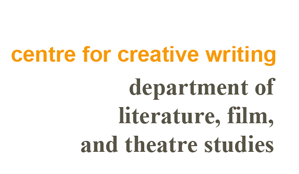Foundlings
Juliet Lockhart
One Walk - One Place - One Time - One Foundling
I begin by walking. All things that happen, happen somewhere, binding story to place, and the way I feel and think about the landscape is rooted in stories.
The East Anglian coastline is my landscape, my 'local'. There are traces left on this landscape that both provoke and evoke memories, occurrences and history. It is about connections - what has happened and what will happen.
Walking through a physical landscape produces a memory map of the place. Images, sounds, smells and textures underfoot are stored in the mind. By revisiting a place over and over again different experiences are layered one on top of another. The way that shingle banks reform daily; relics of defences that are revealed when the tide is low and concealed when high; evidence of fossilised wood, the sharks’ teeth that are scattered on the sand as the waves recede; the skies as the sun sinks and trees that stand on the edge of the cliff poised as if to dive. All of this peels away at a place, so that it unfurls to allow a glimpse of what has been and what might be.
The initial findings then, come from this tidal landscape. A place of constant change, a shape shifting, volatile place. The product of a place where natural forces come together with human forces sometimes in opposition and sometimes as one. They are salvaged materials from salvaged places and the memories from these places that come together momentarily in between the tides.
As in an archaeological dig some shards remain mute, isolated and disconnected waiting for other hands to come along to discover their pattern and reassemble them They are Nature’s debris re-assembled into puppet like objects, hovering between life and death, on the brink, on the edge.
The art of bringing things to life is how I relate my sculpture to puppetry. Puppets are objects that always appear to be as much dead as alive; always on the brink of life or death, on the edge, the not knowing. Puppets are figures of metamorphosis, of magical potential. They stand on the cusp of what is real and what is longed for.
The Foundlings have their roots in the beginnings of puppets, raw and elemental. From when man first carved tiny figures from soft stone, bones and tusks. From the Venus of Willendorf carved from limestone and covered with red pigment.
They are animated images, constructed bodies that become a physical manifestation of the spirit of a place.
Each puppet suggests a narrative. Memories are projected through these figures, embedded in them. They are constructed from a mulititude of narratives layered onto place.
As objects they exist to be animated by action, they cannot perform on their own but need human intervention. The verb 'to animate' does not mean to move but rather it means 'to give soul to' from the Latin word 'anima.' The notion of soul crops up time and time again in connection with puppets. There is something intensely magical about being able to bring to life an inanimate object. The power of being able to articulate that which cannot easily be spoken. What a gift to be given.
Folk tales in their various guises are scattered throughout time and history. The folk tale takes its time to unfold, to reveal its meanings. They lead us into the world and show us it is possible to change, to transform and to wonder. They allow us to endlessly retell, reshape and revise them so that they can fulfil the needs of any community or individual at any time.
Foundling No1 - Felixstowe - 15.01.12


Foundling No2 - Eastlane - 04.02.12


Foundling No3 - Landguardfort - 19.02.12



About the article
Foundlings
My new work, Foundlings, has its roots in wild writings and was born of Tidal Margins, a three year project responding to the Suffolk Coastline. Foundlings are articulated figures made from found objects and debris washed up on the East Anglian coastline. Each figure is made from findings made on one particular walk in one place. Broken shells; spars of wood; plastic, bleached like bones; bits of rope and tangled fishing line; a silk rose and shards of sea polished glass are collected, bleached, categorised, boxed and labelled with a time and date and location of the walk on which it was found.
About the author
Juliet Lockhart
I am a sculptor and installation artist. Narrative and place have always threaded through my work alongside a deep interest in puppetry as an art form. In 2011 I graduated from the University of Essex with an MA in Literature & Creative Writing. The modules I studied contributed to a deeper understanding of place and story. Through writing about place and re-telling folk and fairytales my own practice has undergone a transformation.


